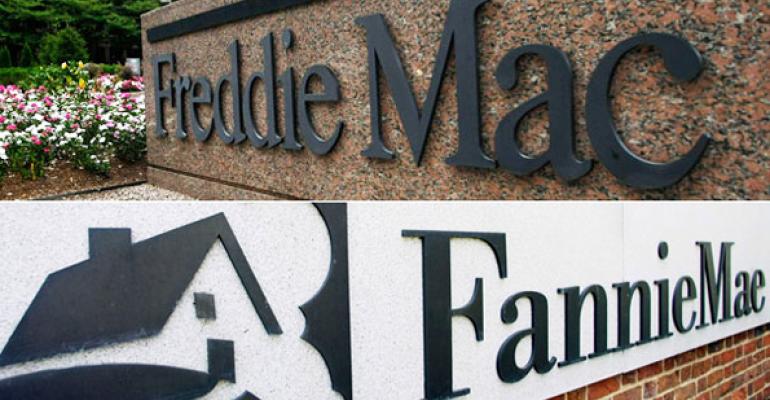If you own an apartment property where the rents are relatively low, Fannie Mae and Freddie Mac have an extra motive to offer you competitive financing options.
“We have a mandate to lend to naturally-occurring affordable housing properties… the kind of basic housing where lots of Americans live, like teachers, firefighters and municipal workers,” says David Brickman, executive vice president of the multifamily business for Freddie Mac.
Fannie Mae and Freddie Mac face strict federal limits on how much they can lend to apartment properties. But loans to affordable housing assets won’t count towards those caps. Fannie Mae and Freddie Mac can offer these properties competitive, low rates without worrying that they might lend too much and bump up against their limits for the year. Accordingly, the agencies plan to grow their lending business to affordable housing properties.
“We are trying to become more competitive,” says Brickman. “A lot depends on the ability to commit early, provide proceeds and certainty of execution.”
Informally affordable apartments
A property doesn’t need to be in a formal program to count as affordable—the apartments just have to rent at prices affordable to working families at the time the loan is underwritten. There is no lengthy process to certify the incomes of residents either. Loan underwriters simply compare the apartment rents to the local area median income figures released by the U.S. Department of Housing and Urban Development.
Fannie Mae and Freddie Mac don’t have to count loans made to apartments with affordable rents toward the $30 billion limit on their lending to multifamily properties. The Federal Housing Finance Agency (FHFA) counts apartment that rent at rates affordable to households earning 60 percent of the area median income as “affordable.” If a property is a mix of affordable and market rate apartments, a portion of the loan amount based on the percentage of affordable apartments is still excluded.
In markets with high housing costs, middle income residents also struggle to pay for housing. In these areas, rents are considered “affordable” if households earning 80 percent of the area median income (AMI) can pay them without paying more than 30 percent of their income. That rises to 100 percent in very high cost markets.
Loans to small apartment properties, with 50 units or less, and loans to manufactured housing properties also don’t count towards the FHFA limits.
This spring, Fannie Mae and Freddie Mac have raised their interest rates and tightened their underwriting to slow down their lending to make sure they don’t lend past their limits, according to brokers and lenders interviewed for this story. Since affordable housing properties don’t count towards the cap, they may benefit from lower interest rates than other assets.
In 2014, Freddie Mac made $2.7 billion in loans to “targeted” affordable housing properties. That means the properties have been part of a government affordable housing program, like the federal low-income housing tax credit (LIHTC) program, which restricts how much the landlord can charge in rent.
“We are definitely expanding out programs in targeted affordable housing,” says Brickman. “We’re hoping to double our business over the next two years.”

